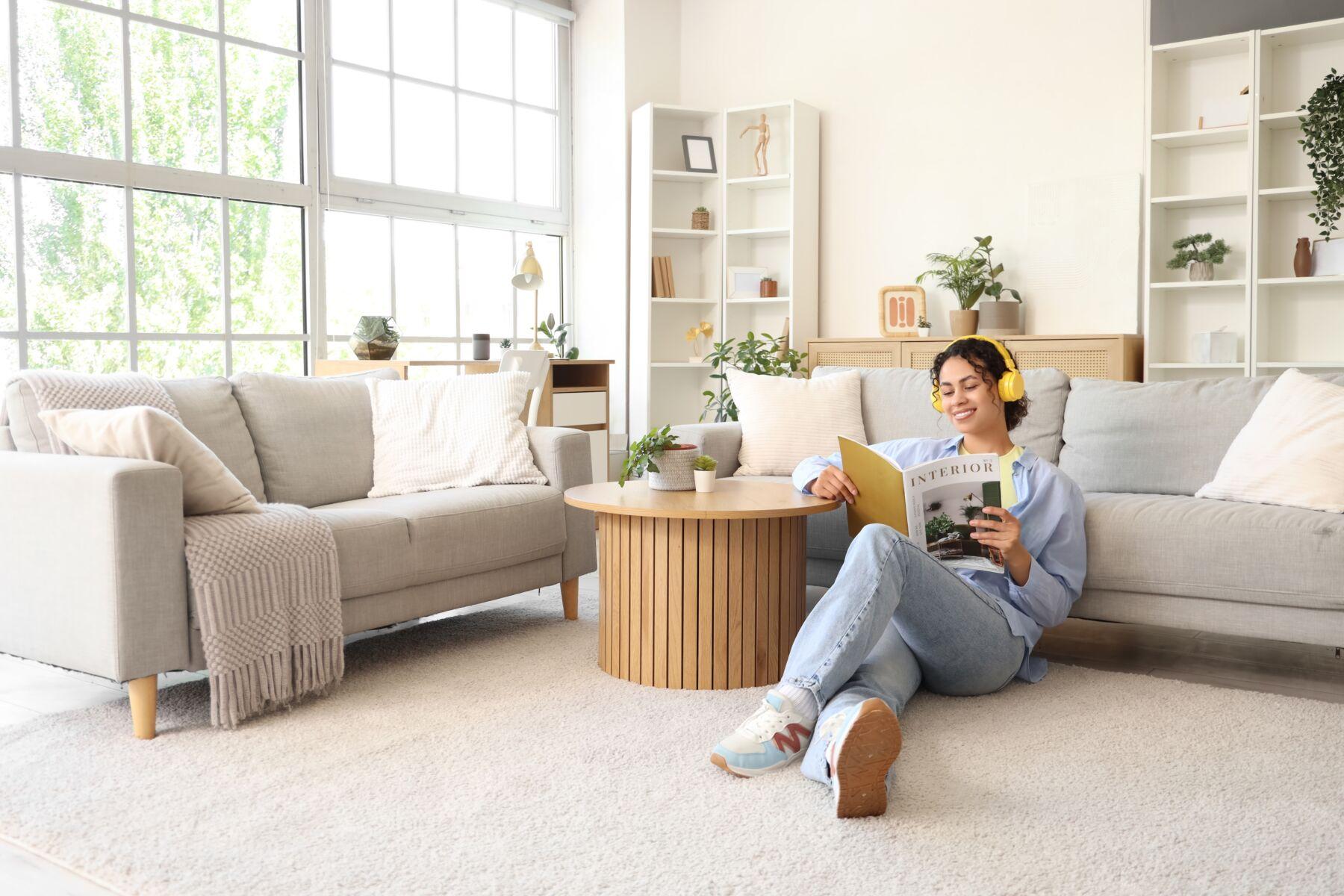According to the US Census Bureau, 36% of housing units were occupied by renters in 2019. That means 1 in 3 Americans rent their homes. It’s a competitive rental market, and that means finding affordable housing that meets your criteria but doesn’t break the bank can be difficult
Rental properties can be found in any real estate market and come in all shapes and sizes. It’s all these factors that impact the cost of renting a property.
Here’s a breakdown of the average rent for the four most common types of rental properties: apartments, townhouses, single-family homes, and coliving.
| Rental Type | Average Rent | Utilities Included |
|---|---|---|
| Apartment | $1,200 per month | No |
| Townhouse | $1,665 per month | No |
| Single-Family Home | $2,175 per month | No |
| Coliving with PadSplit | $663 per month | Yes |
Pros and Cons of Renting an Apartment
An apartment is an individual residential unit that is part of a larger residential building. Apartment buildings are often owned and managed by a company. This company is responsible for the administration and maintenance for all units in the building. As a result, apartments are a low-maintenance rental option. Apartments are very common in most places, and they make for a good living solution if you need somewhere to live fast. Many apartment buildings also offer amenities like pools, gyms, social events, and onsite laundry facilities.
An apartment is a type of traditional rental agreement that requires signing a lease and paying security deposits to secure the unit. Additionally, renters are responsible for setting up and paying monthly utilities such as power, water, WiFi, and more.
According to Newsweek, the average monthly rent for an apartment in the United States was $1,200 in 2021. Apartment rental prices vary by market and size of the apartment.
Pros of Renting an Apartment:
- Less maintenance
- Amenities
- Location choices
- Often have multiple floorplans or move-in options
Cons of Renting an Apartment:
- Lack of privacy
- Smaller square footage
- Must pay utilities
- Long-term leases
Pros and Cons of Renting a Townhouse
A townhouse, or townhome, is a residential unit that is part of a larger residential building just like an apartment. However, they are typically larger than an apartment and offer more privacy. Townhouses are typically owned and rented out by an individual rather than a company. As a result, townhouses are slightly higher maintenance for renters than apartments.
A townhouse is a type of traditional rental agreement that requires signing a lease and paying a security deposit to secure the unit. Additionally, renters are responsible for utilities and sometimes any HOA (homeowners association) fees for the community.
Calculating the average rent of a townhouse is a bit tricky because there are many factors which affect it. These include the real estate market, value of the property, number of bedrooms, and overall square footage. However, a general rule of thumb is for homeowners to charge 1% of the value of the home. The average cost of a townhouse was $166,500 in 2021. Therefore, the average rent would be $1,665 per month.
Pros of Renting a Townhouse:
- More expensive than apartment
- Larger square footage than an apartment
- Often includes outdoor space such as a yard
- Neighborhood or community feel
Cons of Renting a Townhouse:
- Can require more maintenance from resident, including yardwork
- Neighborhood may have rules
- Must pay utilities
- Larger square footage will likely result in higher utility bills
- Longer leases
Because townhouses are often owned and rented out by an individual rather than a company, your landlord can make or break your leasing experience. It’s important to do your due diligence on prospective landlords before signing a lease.
Pros and Cons of Renting a Single-Family Home
A single-family home is defined as a free-standing, unattached residential unit. It’s what most people think of when they think about a house. They are designed to have one owner, no shared walls, and stand on their own piece of property. Like townhouses, single-family homes are typically owned and rented out by an individual owner rather than a company. They are also the highest maintenance option for renters.
A single-family home is a type of traditional rental agreement that requires signing a lease and paying a security deposit. Additionally, renters are responsible for utilities, any HOA fees, and oftentimes, lawn maintenance.
Calculating the average rent of a single-family house is similar to calculating the average rent for a townhouse. The real estate market, value of the property, number of bedrooms, and overall square footage affect the rental price. Like townhouses, the general rule of thumb is for homeowners to charge 1% of the value of the home. According to the US Census Bureau, the median value of a home was $217,500 in 2020. Therefore, the average rent would be $2,175 per month.
Pros of Renting a Single-Family Home:
- Privacy
- More space, including a yard
- Space for pets if landlord allows
Cons of Renting a Single-Family Home:
- Often the most expensive rental option
- High demand and rent quickly
- Can require more maintenance from renter, including yard work
- Must pay utilities
- No amenities
Like townhouses, single-family rentals put you at the mercy of your landlord for maintenance, cost, and stability. It’s important to keep that in mind when searching for a single-family home to rent.
Pros and Cons of Renting through PadSplit (Co-Living)
Co-living is a type of shared-housing arrangement designed to be more affordable and offer greater flexibility than a traditional rental arrangement. Co-living includes short-term, flexible leases as well as many perks not included in traditional renting. These perks include utilities as part of the weekly payment and beautiful, furnished homes.
PadSplit is a co-living membership program. For a fixed weekly payment, residents get a private, furnished room, utilities, internet access, and laundry facilities. PadSplit facilitates the relationships between everyone and manages all the paperwork like payment processing and background screenings where available.
Unlike traditional renting, PadSplit doesn’t require you to sign a lease or pay a security deposit. It’s different than sharing a house with a friend who suddenly decides to move out. It’s designed to help Members achieve their personal and financial goals. The average weekly rent is $165, and our Members save an average of $420 per month!
Pros of Renting a PadSplit:
- Most affordable option
- No long-term lease or security deposit required
- Multiple locations across metro areas
- Fixed weekly rate includes all utilities and laundry access
- Maintenance requests handled through Host
- Access to telemedicine services
Cons of Renting a PadSplit:
- Single occupancy only
- May have to share a bathroom
- No pets allowed
- Shared common kitchen
How to Join PadSplit?
To become a PadSplit Member, you fill out background and employment verification forms. You also pay a $19 fee to cover your background screening where available. Once approved, you can book a room and move in within 48 hours.
Final Thoughts
When it comes to deciding what type of place to rent, it all comes down to prioritizing what’s important to you as a renter. Apartments, townhouses, single-family homes, and PadSplit all come with their own advantages and disadvantages. Knowing the pros and cons will help you decide what the best housing option is for you.


